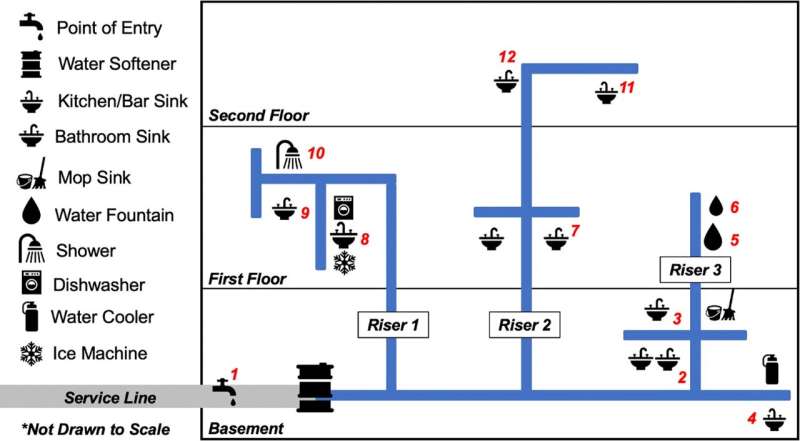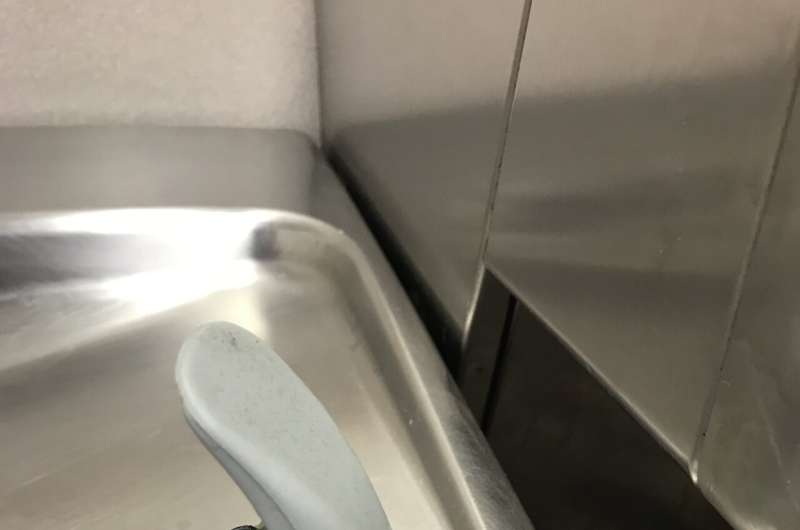Office buildings with infrequent water use may have poor water quality

Low-consumption office buildings with infrequent water use could have chemical and microbiological safety issues, according to a study published in PLOS Water by Andrew Whelton at Purdue University, Indiana, United States, and colleagues. The research could have implications for office buildings used less frequently during pandemic lockdowns, and suggests that regular water testing in commercial buildings may be needed.
Many office buildings have decreased occupancy during weekends and holidays—and recently, during pandemic lockdowns—increasing water stagnation in plumbing. Green buildings are designed to reduce water consumption using efficient fixtures and alternative water supplies. However, due to the combination of lower building water use and low occupancy periods, the safety of water from green buildings is unknown. To better understand chemical and microbiological quality in a green commercial office building plumbing after weekend stagnation, researchers sampled water from a ten-year-old, three story, LEED-certified office building in Indiana between January and February 2020. Samples from all water sources in the building were tested for pH, metals, ions, as well as bacterial strains of Legionella.
Researchers found that copper and lead levels increased over the weekend, and that Legionella counts were highest at a fixture which had no use recorded during sampling. Additionally, the concentration of the disinfectant chlorine decreased over the weekend. The study had several limitations as it relied on self-reported data for measurements of fixture use and may have misreported usage frequency at some locations. Future studies are needed to further analyze how water-saving appliances may impact water quality.

According to the authors, "To prepare plumbing to code, water chemical and microbiological testing is not required or recommended. The green office building studied had many features that are increasingly common in new buildings, including low-flow faucets, automatic faucets, and alternative piping systems for major water uses like toilet flushing and irrigation. These design elements can change water temperature profiles and significantly reduce the amount of water used compared to traditional office buildings, raising concerns for water quality degradation".
The authors add: "The first people in the office on a Monday morning may, in fact, be using contaminated drinking water. To better understand if the water we are using is safe, much more water testing at the faucet must be conducted. Plumbing design standards and codes must also be revised."
More information: Montagnino E, Proctor CR, Ra K, Ley C, Noh Y, Vigil K, et al. (2022) Over the weekend: Water stagnation and contaminant exceedances in a green office building. PLOS Water 1(3): e0000006. doi.org/10.1371/journal.pwat.0000006
Provided by Public Library of Science




















